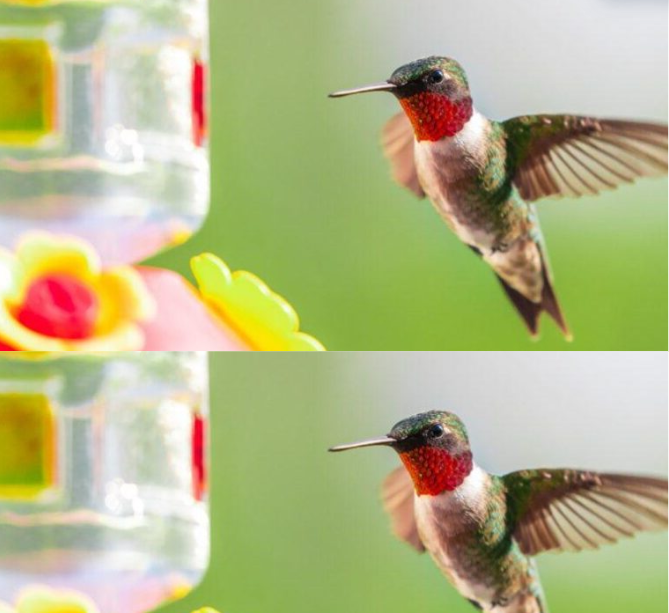Have you ever dreamed of turning your yard into a sanctuary for hummingbirds? That was my goal, and with the guidance of a hummingbird expert, it became a reality. Now, my yard hums with the vibrant energy of these tiny, mesmerizing creatures. Let me share what worked for me and how you can create a hummingbird paradise in your own outdoor space.
Why Welcome Hummingbirds Into Your Yard?
1. They’re Nature’s Helpers
Hummingbirds are vital pollinators, flitting from flower to flower and helping plants reproduce. Their presence supports biodiversity and keeps your garden thriving.
2. They Add Joy and Beauty
Watching hummingbirds hover and dart around brings a sense of peace and wonder. Their vivid colors and graceful movements can transform your yard into a serene and lively retreat.
Understanding Hummingbirds: What They Need
Hummingbirds are high-energy creatures with wings that beat up to 80 times per second. They rely on nectar for sustenance and are attracted to vibrant, nectar-rich flowers. To make your yard irresistible to them, you’ll need to provide three essentials: food, shelter, and water.
Plants That Attract Hummingbirds: Expert Advice
1. Choose the Right Flower Shapes
Hummingbirds love tubular flowers. Their long, slender beaks are perfectly suited to extract nectar from deep blooms that other pollinators can’t reach.
2. Focus on Bright Colors
Reds, pinks, and oranges are especially enticing to hummingbirds. These vivid hues stand out to their sharp vision and act as a natural invitation.
3. Opt for Nectar-Rich Blooms
Not all flowers produce equal amounts of nectar. The expert recommended plants like Salvia and Trumpet Vine, which are known for their abundance of sweet nectar.
Best Plants to Attract Hummingbirds
Native Plants
Native flowers are perfectly adapted to your local environment and provide the nectar hummingbirds need. For example:
- Coral Honeysuckle (common in the southern U.S.)
- Penstemon (found in the western U.S.)
Perennials That Return Year After Year
- Bee Balm
- Columbine
- Salvia
These plants ensure your yard remains hummingbird-friendly without constant replanting.
Easy-to-Grow Annuals
- Petunias
- Zinnias
- Snapdragons
These vibrant blooms keep your yard colorful and inviting all season long.
Vines and Shrubs
Add vertical variety with plants like Trumpet Creeper or Butterfly Bush, which provide both nectar and shelter.
How to Create a Hummingbird Haven
1. Strategic Plant Placement
Group flowers in clusters to make them more visible to hummingbirds. Place them in sunny areas since these birds are most active during daylight hours.
2. Add Water Features
Hummingbirds love shallow fountains, misters, or sprays of water where they can bathe and play, especially during hot weather.
3. Avoid Harmful Practices
Steer clear of pesticides, which can harm hummingbirds. Additionally, avoid using artificial sweeteners in nectar solutions.
My Experience: A Yard Transformed
1. A Surge in Hummingbird Visits
Within weeks of following the expert’s advice, my yard was teeming with hummingbirds. It was magical to see them zipping around and enjoying the garden I’d created for them.
2. A Thriving Ecosystem
Beyond hummingbirds, my yard began to attract butterflies and bees. The entire space felt more alive and harmonious.
Maintenance Tips for a Hummingbird-Friendly Yard
1. Keep Feeders Clean
Clean feeders every 3-5 days to prevent mold and bacteria. Use a simple sugar-water mix (1 part sugar to 4 parts water) without food coloring.
2. Plan for Year-Round Blooms
Plant a variety of flowers that bloom at different times of the year. This ensures a continuous supply of nectar for hummingbirds.
3. Protect Your Visitors
Place feeders and flowers in open spaces, away from hiding spots where predators like cats could lurk.
Conclusion
Transforming my yard into a hummingbird haven was one of the most rewarding experiences of my life. By planting the right flowers and creating a welcoming environment, I was able to enjoy the beauty and joy these incredible creatures bring. If you’re ready to experience the magic of hummingbirds, start planting today—you’ll be amazed at the transformation!
FAQs About Attracting Hummingbirds
1. How often should I clean my hummingbird feeders?
Every 3-5 days, especially in warm weather, to keep the nectar fresh and safe.
2. When is the best time to plant flowers for hummingbirds?
Spring is ideal, as it gives plants time to grow before summer when hummingbirds are most active.
3. Should I use store-bought nectar?
Homemade nectar is better—it’s free of additives and just as effective.
4. Do hummingbirds stay year-round?
Many species migrate, but providing food and shelter can encourage them to stay longer.
5. How can I keep predators away from hummingbirds?
Place feeders and flowers in open areas where predators can’t easily hide.
Start your journey to creating a hummingbird-friendly yard today—you won’t regret it!
 Skip to content
Skip to content 
